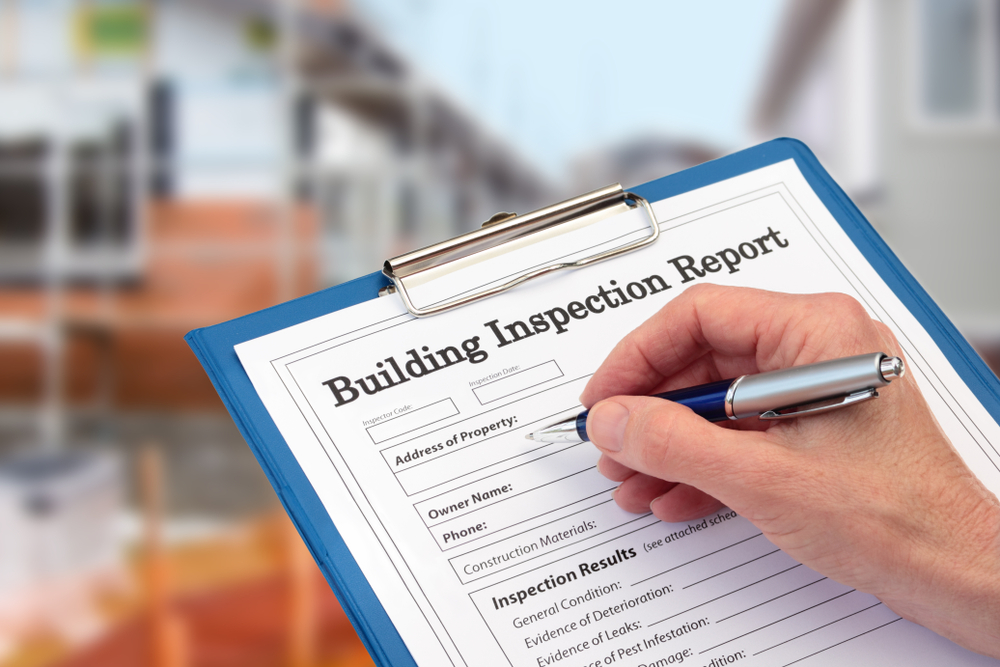Commercial Inspection Red Flags Every Investor Should Know

Commercial real estate is one of the most lucrative investment avenues, especially in regions like Western Montana, where growth is steady and opportunities are abundant. However, for all its promise, the sector is also riddled with potential pitfalls that can leave even experienced investors grappling with financial and legal nightmares. Conducting a commercial property inspection in Montana is therefore not just a routine procedure but an indispensable safeguard. Throughout this blog, we will explore the commercial inspection red flags every investor should know, providing a practical roadmap for avoiding costly surprises and protecting your investment portfolio.
The Structural Integrity Trap
One of the most significant commercial inspection red flags is hidden structural damage. Commercial buildings, especially older structures common in Western Montana, often conceal cracks in foundations, uneven flooring, or bowed walls that can signal deep-seated problems. These might have originated from shifting soil, inadequate initial construction, or prolonged water infiltration. Often, cosmetic repairs disguise these flaws temporarily, giving a false sense of security to unsuspecting investors. During a commercial property inspection in Montana, a qualified inspector should pay particular attention to load-bearing walls, roof systems, and the basement or crawl spaces. Ignoring these issues can result in astronomical repair costs, lost rental income, or even forced demolition down the line. Because structural deficiencies can pose serious safety hazards, they must be identified and fully understood before closing any transaction.
Structural concerns are not always easy to detect with an untrained eye. For example, a sloping floor might seem harmless, but it could reflect a sinking foundation. Similarly, water stains on the ceiling might indicate more than a leaking roof—it could be a sign of mold growth or even rotting beams that threaten the integrity of the entire building. In Western Montana’s varied climate, freeze-thaw cycles can exacerbate these vulnerabilities, making thorough inspection even more crucial. Professional inspectors employ tools like thermal cameras and moisture meters to detect what is invisible to buyers, ensuring that your investment rests on a solid foundation, both literally and figuratively.
Plumbing and Electrical Red Flags
Another essential aspect of commercial property inspection involves plumbing and electrical systems. Many commercial investors focus on visual appeal—fresh paint, modern facades, and updated signage—without considering what lies behind the walls. Outdated wiring is a major commercial inspection red flag. Old knob-and-tube systems or aluminum wiring, still surprisingly common in legacy commercial properties, create fire risks and fail to meet modern electrical codes. Inspectors will check the load capacity of breaker panels, grounding integrity, and any signs of overheating or amateur repairs. These issues can carry substantial liability, particularly if a future tenant or customer is harmed as a result of electrical failure.
Likewise, plumbing can present hidden dangers to investors. Galvanized steel pipes, which were once the industry standard, corrode over time, leading to reduced water pressure, leaks, and ultimately, significant water damage. Blockages in sewer lines, often caused by tree roots in Western Montana’s older neighborhoods, can back up wastewater into the building, posing a sanitation and health hazard. Commercial plumbing inspections should include scoping of sewer lines with cameras and pressure testing to identify weaknesses long before they escalate. Addressing these issues after the purchase can cost exponentially more than budgeting for proper repairs during negotiations.
Environmental and Safety Hazards
Investors often overlook environmental issues during a commercial property inspection, assuming these concerns apply only to industrial facilities. Yet even retail, hospitality, or office properties can harbor hazardous materials. One of the most critical commercial inspection red flags is the presence of asbestos, particularly in structures built before the 1980s. Asbestos was widely used for insulation and fireproofing, but when disturbed, its fibers become airborne and can cause life-threatening illnesses. A thorough inspection will confirm whether asbestos is present and whether professional abatement is necessary before renovations begin.
Another environmental red flag involves mold. Mold thrives in Western Montana’s humid summers and snowy winters, especially in poorly ventilated commercial spaces. Besides causing structural damage, mold can trigger health problems for tenants, employees, and customers, leading to potential lawsuits. Inspectors should also test for radon, a naturally occurring radioactive gas that seeps through foundation cracks. Long-term radon exposure has been linked to lung cancer, making it a critical health risk if left unmitigated. Finally, commercial inspectors should confirm the presence and proper function of fire suppression systems, sprinklers, alarms, and emergency exits. Overlooking these life-safety systems can result in fines, lawsuits, and increased insurance premiums, all of which erode investment returns.
Roofing and Exterior Issues
While interior systems draw the lion’s share of attention, an investor must never overlook the building’s exterior, starting with the roof. Roof replacements can run into six-figure sums for large commercial structures, and failures can lead to catastrophic water intrusion. Commercial inspectors will examine membrane roofs, flashing, drainage systems, and any evidence of ponding water or prior patch jobs. In Western Montana’s climate, ice damming during winter and UV degradation in summer accelerate wear and tear, making regular inspections a necessity rather than a luxury.
Walls and exterior cladding also deserve close attention. Cracks, gaps, or signs of shifting can let moisture penetrate, compromising insulation and promoting mold growth inside the walls. Poor exterior drainage and grading issues can direct water toward the foundation, creating long-term structural concerns. Inspectors will look for rotted siding, broken seals around windows, and corroded metal supports, which can compromise not only aesthetics but also the stability of the structure. Commercial inspection red flags tied to the building envelope should never be dismissed as merely cosmetic. Small exterior flaws can grow into serious, expensive disasters if neglected.
Parking lots, sidewalks, and exterior staircases also require inspection. Uneven pavement, cracked concrete, or broken railings expose investors to liability risks if tenants or visitors are injured. These hazards also detract from the curb appeal and usability of the property, potentially reducing its rental or resale value. In Western Montana, where freeze-thaw cycles can wreak havoc on outdoor surfaces, proactive evaluation of the exterior should be standard practice for every commercial investor.
Title, Permits, and Compliance Surprises
One of the most frustrating—and often overlooked—commercial inspection red flags relates not to the building itself but to its legal and regulatory status. Investors frequently assume that if a property is standing and occupied, it must be compliant with local codes and permitted appropriately. Unfortunately, this is not always the case. Unpermitted additions or renovations can trigger legal disputes, fines, and even forced removal if discovered later. Commercial inspectors, working with legal professionals, should verify that all alterations were properly permitted and signed off by relevant authorities in Montana.
Zoning compliance is another concern. If a property is being used in a way that conflicts with local zoning codes, you could inherit legal challenges that affect the building’s operation or limit its potential. Inspectors will check records to ensure there are no active code violations or unpaid fines that could transfer to a new owner. In Western Montana, where many communities prioritize environmental protections, properties near waterways or designated wildlife corridors face strict permitting requirements that can surprise investors.
Finally, easements and encroachments must be examined. Shared driveways, utility easements, or improperly recorded boundaries can interfere with future plans, renovations, or even day-to-day operations. In extreme cases, legal battles over easements can delay projects for months or years, adding to carrying costs and diminishing returns. Investors who understand these risks and ensure proper legal due diligence as part of their commercial property inspection process will be far better protected against costly surprises.
Conclusion
Commercial property inspection in Montana is far more than a routine box to check. It is the backbone of a smart, risk-managed investment strategy. From structural challenges and outdated electrical systems to hidden environmental threats and legal compliance nightmares, commercial inspection red flags should never be taken lightly. Western Montana’s unique climate, diverse building stock, and strict permitting regulations only amplify the importance of a thorough, professional inspection.
Savvy investors know that a well-executed commercial property inspection can mean the difference between a thriving, profitable investment and a money pit plagued by unforeseen repairs and legal trouble. By understanding these commercial inspection red flags and acting decisively to address them, you safeguard not only your capital but also your reputation and future earning potential. Whether you are acquiring your first strip mall or expanding a robust commercial portfolio, remember that a thorough, detail-oriented inspection is your strongest ally. Commercial real estate in Montana offers enormous promise—but only if you see beyond the surface to what truly lies beneath.
